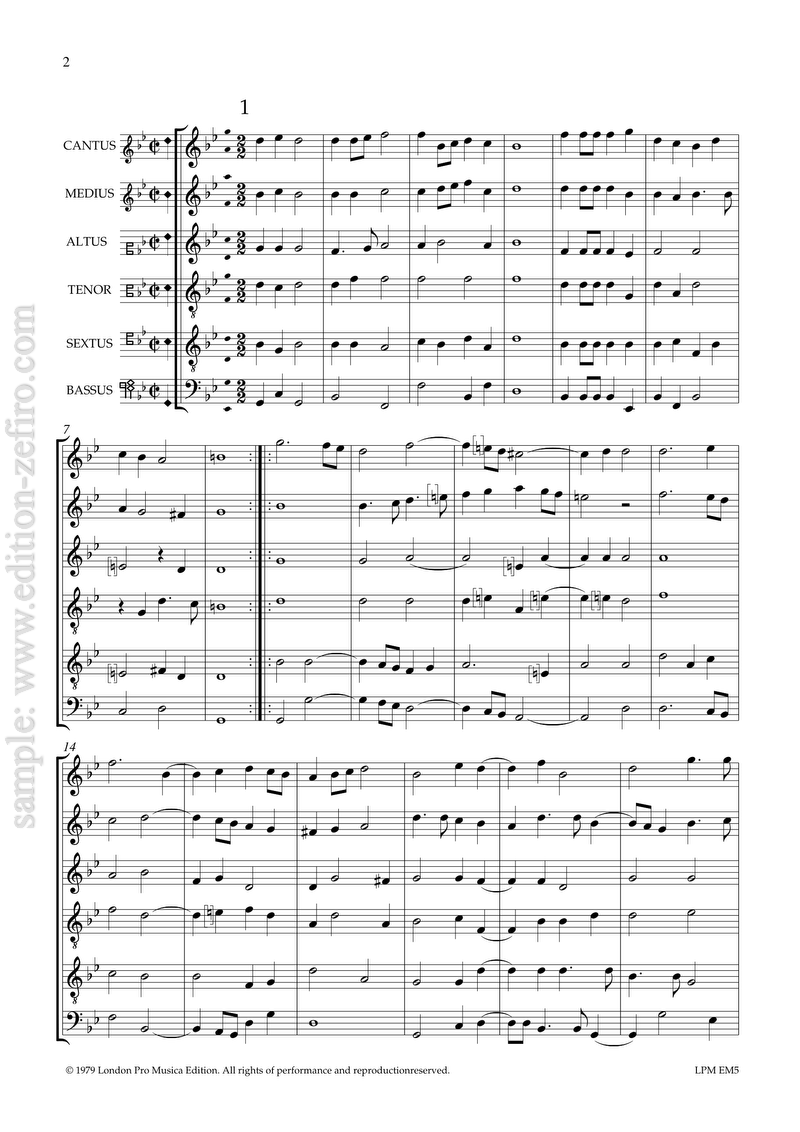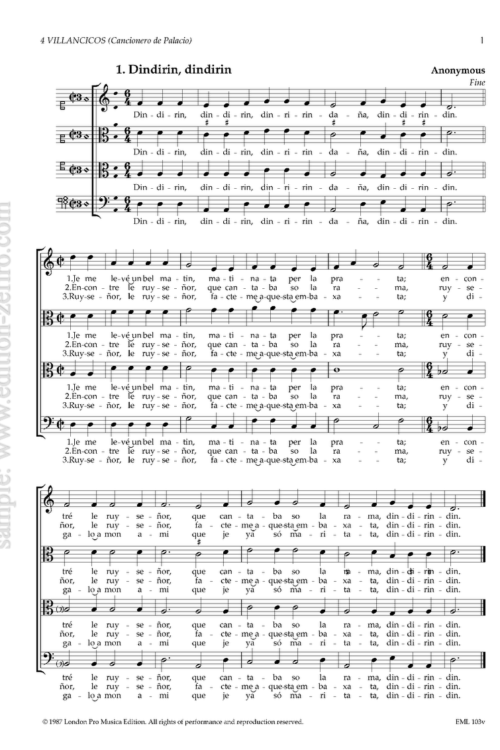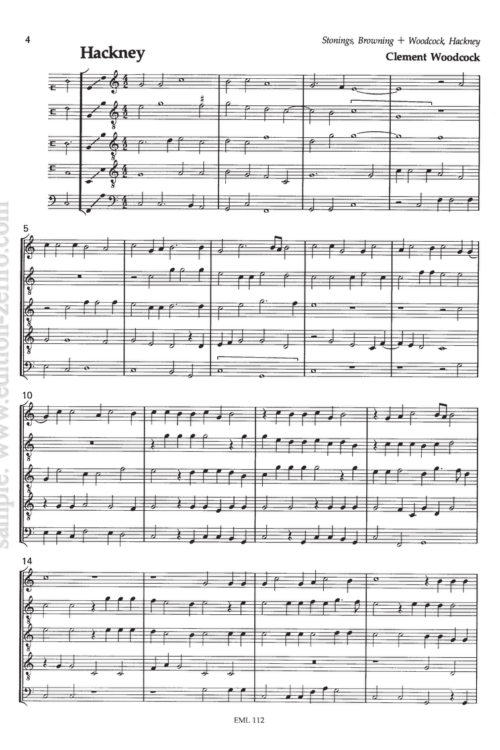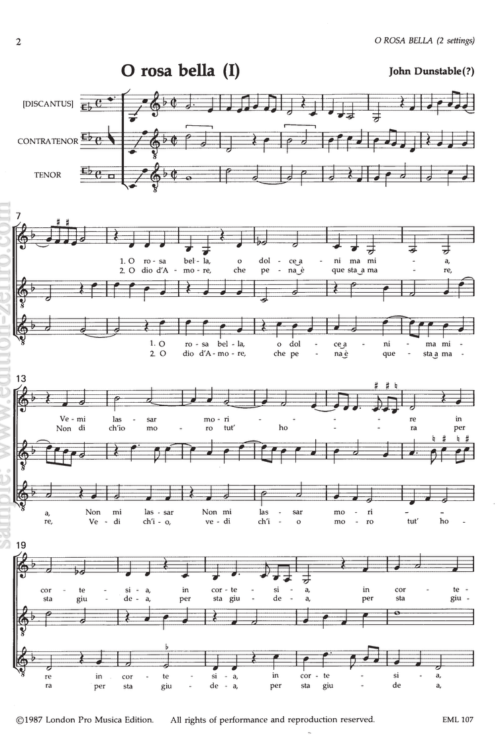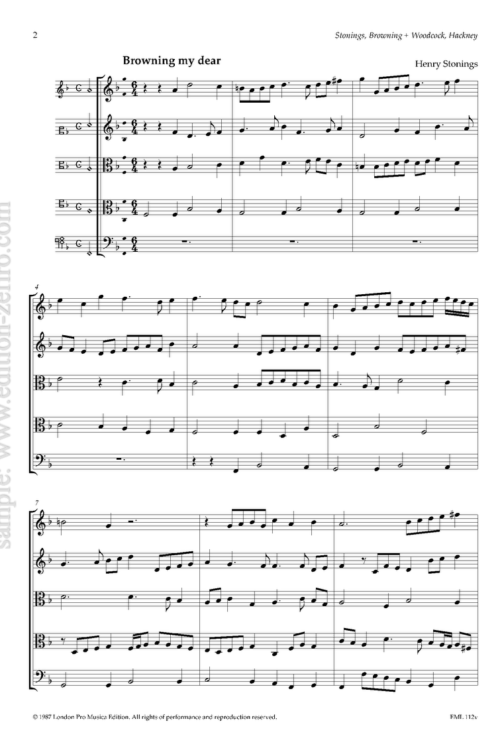John Adson’s Courtly Masquing Ayres was published in 1621. It contains twenty-one five-part pieces and ten in six parts. The publication was clearly meant to appeal to a wide range of players, since the title-page leaves the instrumentation as flexible as possible, saying only that the pieces were composed ‘for violins, consorts, and cornets.’ The last three pieces in five parts are preceded by the more specific suggestion, ‘for cornets and sackbuts’. This combination appears to have become quite a standard one in the royal wind music in the early years of Charles I’s reign; the best known pieces specifically for it are, of course, Matthew Locke’s music ‘for His Majesty’s Sagbutts and Cornets’. It is interesting that a number of pieces by Locke appeared in the 1662 Playford publication which took over Adson’s title, Courtly Masquing Ayres.
Adson dedicated his publication to James I’s favourite, the Duke of Buckingham, whose enthusiastic participation in productions of courtly masques must have made him seem an obvious patron for such a collection of pieces. In the dedicatory epistle, Adson states that the pieces ‘are all (for the most part) Courtly Masquing Ayres, framed only for instruments; of which kind, these are the first that have been ever printed’. This was indeed, the first publication devoted primarily to music from the courtly masque (although continental publications by William Brade in 1617 and Thomas Simpson in 1620 included a substantial number of English masque dances in similar arrangements).
John Adson was one of several English cornet and sackbut players in the service of Charles III Duke of Lorraine, in the early years of the seventeenth century. After his return to England (in 1608?), he was active in London as a performer on wind instruments. From 1614 until his death in 1640 he was a member of the City Waits, and in 1633 he was given the late Henry Lanier’s place as one of his majesty’s musicians for the flute and cornet.
Adson seems to have been prominent as a musician in theatrical circles. There is an allusion to his ayres in Cavendish’s play, The Country Captain (1631); when the drunk captain calls for music, a musician asks, “Do you mean Master Adson’s new ayres, sir?” In 1634, he came under fire from Nicholas Lanier for having been instrumental in the hiring of wind players from the public playhouses (instead of from the King’s Music) for the procession which preceded Shirley’s masque, The Triumph of Peace. (Lanier got his way, and the musicians from Blackfriars and the Cockpit were dismissed in favour of the King’s loud music.)
(Bernard Thomas)


